Another packet of wallpaper samples arrived in the mail. I splayed them out like playing cards on the kitchen island—Hip Rose, Clover, and Twilight Ditsy in colorways of mustard and gold. Felix shrugs.
It's not that he's disinterested; he's learned that weighing in on my décor-decision making is akin to tilting at windmills. Fine. It's a fair cop. But the thing is, Felix inspired this latest bout of decorating fever.
"Let's not submit to the shiny-penny affectation," he said. He reminded me that "people live here." People have had lives here. The house has history, character, and lessons to teach us.
I scowled and continued adding farmhouse looks to my Pinterest board.
Over coffee the next day, in front of the woodstove, by the old wavy-glass paned windows, with the creak of the wide Pumpkin pine floorboards, while Rangeley stretches his good morning, I surveyed the kitchen. I remember the room the first time I saw it—barely a kitchen—and how the home inspector had bounced on the floor upstairs, shaking the entire house.
I painted the new kitchen walls three times before I was satisfied and asked the builder to re-do his first two attempts at replacing the missing load-bearing beam between the kitchen and dining room. Maybe this was perfectionism, or maybe, deep down, I'd known something was missing.
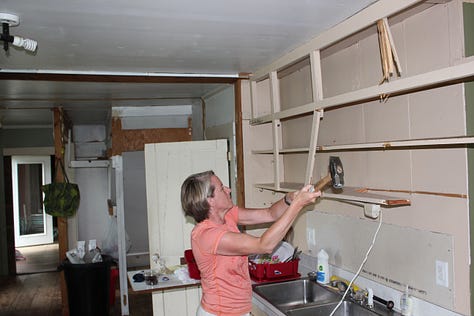
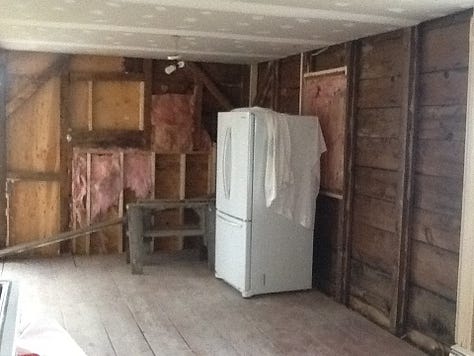
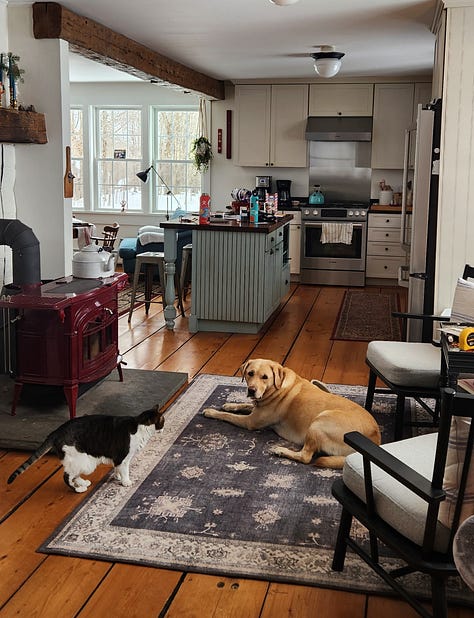
I dug up this flash essay I wrote from a writing group prompt a few years ago. I think it describes the missing thing—what I'd long hoped to find here in Vermont. As I reread it, I think it might also be a timely universal parable.
To the carrying stick
You exist for one purpose. You were made, solid and strong, to hold things up. The wounds cut by your making are visible still even though they were cut by hands at least two centuries old. You wear each scorch, each scratch, every scribble with grace.
Today, we call that patina, and your style is rustic, country, shabby chic. Instagram fawns over your every appearance—in midtown farm-to-table restaurants, luxuriously restored barns, and sculptured glass houses newly built on land where hemlock never grew.
I saved you from the pile of abandon in the shed beside the barn, where every discarded piece was covered, swollen, and bruised with memory. You must have remembered how, in the late summer, shirtless and sweaty boys filled the hay mow and how sour steam would rise to the rafters with each winter morning's milking and the muck-shit-stink of the adjacent hog pen when spring thawed the ground.
It was my idea to bring you in here. I wanted you close to me while I baked, stewed, cleaned, crafted, and studied—that was the perfect country-girl image I'd conjured. I craved the steadfast history of you. And yes, I saw your Instagram-readiness too.
I remember the day our builder pulled you from the shed and placed you end to end on wooden horses in the backyard. I dry-brushed you clean and studied your history—the hand-hewn straightness of you—pocked by God with knots and grain.
You are an imperfect miracle not tolerated by modern men and their machines and lumber yard veneers. You are unique and unbending when conformity and straightness are popular—demanded, even.
I chose what I thought was the broken side to hide in the ceiling, but the builder—his Vermont roots as deep as yours—pointed out the beauty of the hollow mortises and peg holes—their purpose for existing, to carry and hold the weight of things.
He and I stood together in the yard for some time, under the blue-sky summer sun, and considered the meaning of beauty.
When I agreed that we should feature the beam's peculiarities, he nodded. "Well, now," he said. "I think you've made a good choice."
I wonder who removed the carrying stick you replaced, the one that held up a framework supported by a solid foundation. How close was it all to collapse?
In 2013, we held a party to celebrate the house's 200th birthday. So many people told us they lived here once—rented one-half when it was briefly a duplex. "Born here," claimed one of the town's oldest residents. Sledded down the hill, slept in the back bedrooms where I'll cook dinner this evening, stacked wood in the L between house and barn where Felix and I now sleep.
The history came to us in splinters. Horses and tall maples in the front yard, handyman renovations, births and weddings, cancer, mental illness, suicide. A wooden sign we found in the fire pit that read, "Family," half-charred and broken.
The knots and burls of a long-loved life.
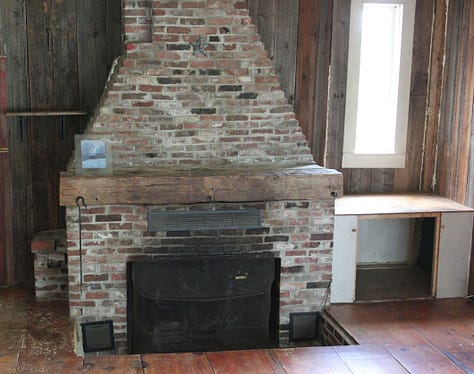
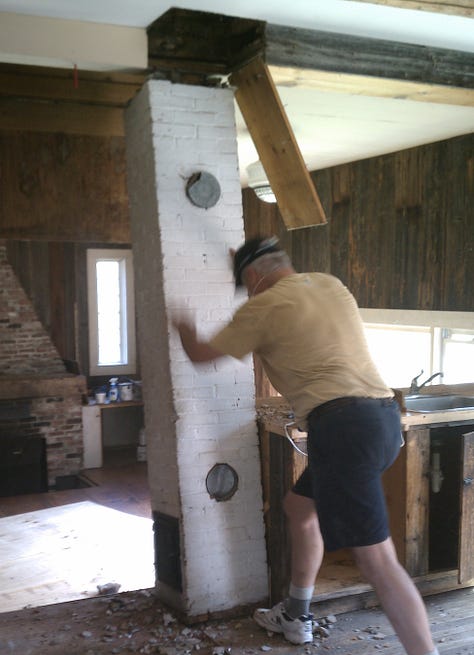
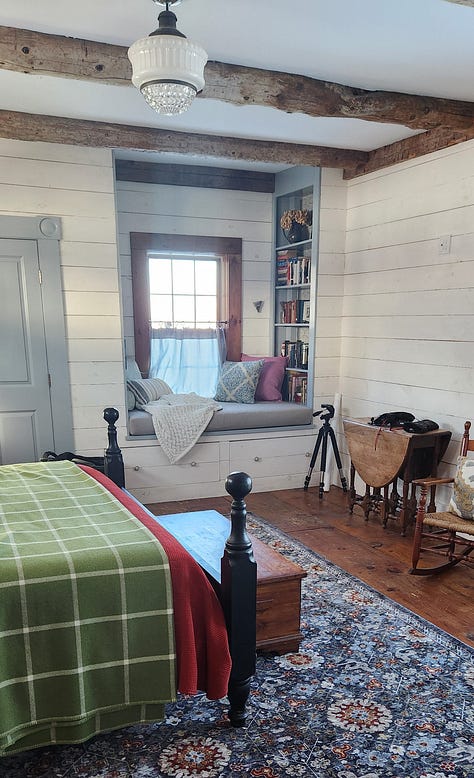
For a while, most of last year, actually, I daydreamed about moving and building something new with sharp corners, unblemished woodwork, and straight walls. I fed Felix my rationales—closer to our new grandson, less maintenance, high-speed internet, restaurants!
I started calculating the resale value for every new project idea. Then Felix slowed my roll.
"We live here. This is our home. Don't worry about resale—who knows what the future holds. The house is ours now; let's enjoy it."
That's when I ordered the wallpaper samples. No more Joanna Gains-approved neutrals. Give me Mulberry Thistle, Poppy, and Willow.
Imagine a house where the dog is forbidden from the couch, where you wouldn't discover long division engraved on the soft pine table or wonder what the crooked walls might know. I shudder to think of this house shorn of its history—or me shorn of mine.
I've let go of perfection. Hahahhaaa. Better to say my idea of perfect is evolving, expanding, and more inclusive. The living room renovation is happening, but now I want life-affirming rainbow colors and a sofa upholstered to match the shade of a yellow Lab's belly.
Work hard. Be brave. Believe.
Catherine



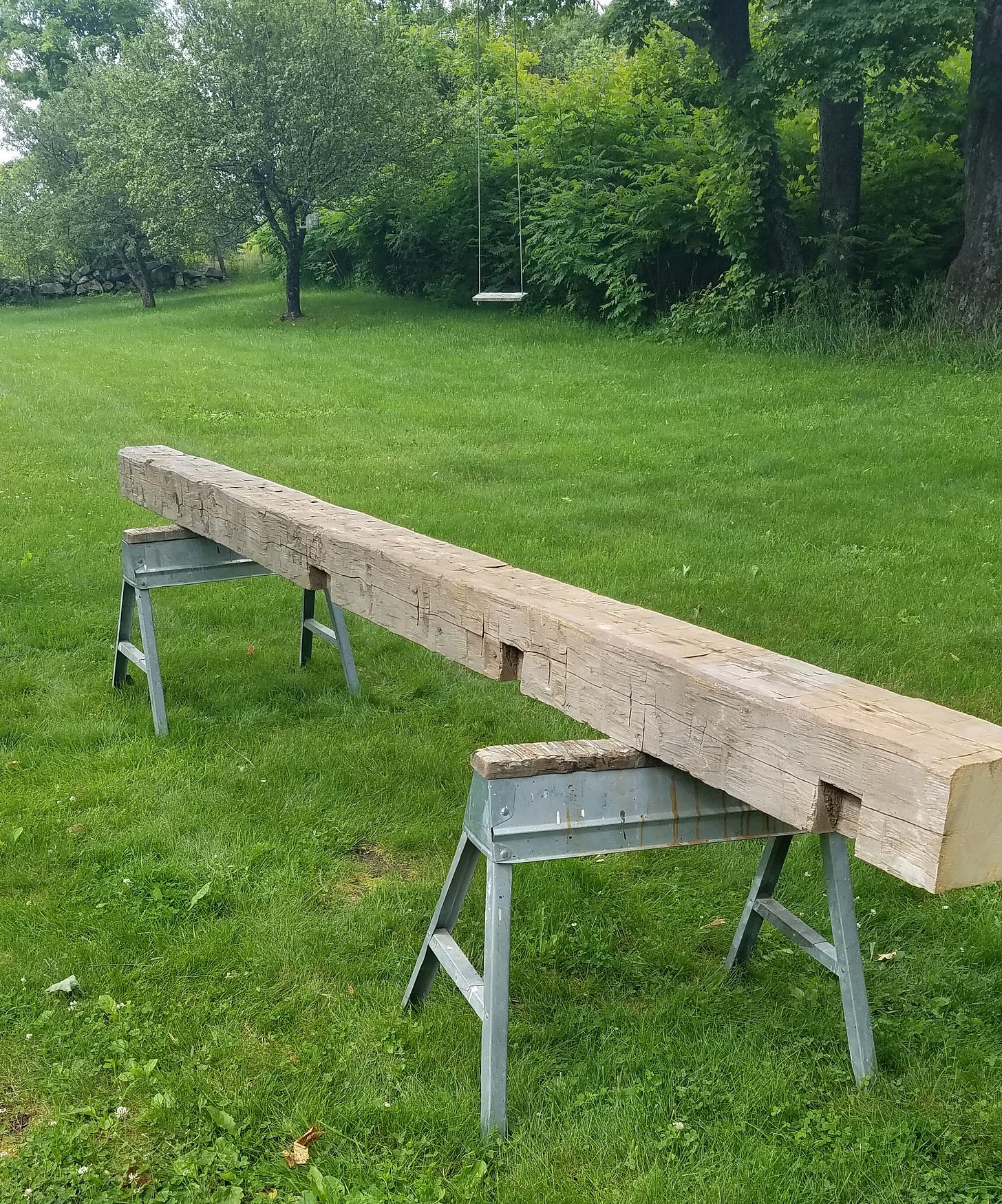
Looks just like my house.